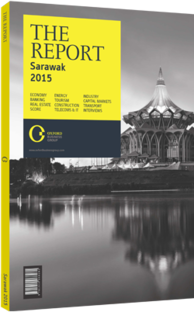Sarawak's biodiversity makes it an ideal location for ecotourism
Sarawak possesses some of the richest biodiversity in the world, turning the state into an ideal location for ecotourism projects. However, a range of factors, including shortcomings in infrastructure and a lack of coordination, means that the full potential of ecotourism in the state has not yet been tapped.
By spreading visitors into more isolated parts of the hinterland, revenues generated by ecotourism could help uplift impoverished communities, while providing visitors with an immersive cultural experience. “We are starting to see some material ecotourism initiatives, but further infrastructural investment is needed,” Dr. Henry Chan, the head of conservation for Sarawak at the World Wildlife Fund, told OBG, “Using tourism to promote conservation and sustainable development while minimising deforestation and degradation requires Malaysia, Indonesia and Brunei, which share Borneo’s rainforest, to work together more strongly.”
HOMESTAYS: Borneo is renowned for its traditional longhouses, which take the form of communal wooden residences built on stilts to provide inhabitants with a natural breeze and protect them from flooding. Longhouse styles differ by tribal group: a stay in one of Sarawak’s Iban dwellings was listed by Lonely Planet in its top 10 rankings in 2014 for the category “Where to feel like one of the family”.
Indeed, the federal homestay programme has promoted longhouse stays with mixed success. As of the end of 2013, there were 437 homestays operating in the state, with 14,411 mostly foreign visitors that year, according to data from the Ministry of Tourism. However, this figure may does not include unofficial operations. The authorities are cautious about home-stay licensing as they do not want sub-standard properties to receive official approval. Even so, homestay operators can draw on state funds to upgrade facilities. The more authentic longhouses are found deep in the jungle or up-river. While part of the sense of adventure found in visiting a longhouse includes the difficulties of getting there in the first place, until more rural airports are constructed and the pan-Borneo highway is completed, access will continue to present a challenge for most visitors.
While rustic amenities are part of the charm of spending a few nights in a longhouse, the less bold tourist requires access to the rudimentary infrastructure that some homestays have not provided. Such issues are not only physical in nature: for example, a community that lacks the telecommunications equipment required to field phone calls or respond to emails from travel agents and group organisers will find it increasingly difficult to actively participate in any type of homestay scheme.
According to one travel agent head OBG has spoken to, better identifying and educating prospective homestay host communities on what it takes to cater to tourists’ requirements will be essential for the programme’s success. Moreover, many of the indigenous communities, unaware of the concept of tourism, do not properly understand how it can benefit them in the long term. It can also be difficult to market homestay projects when they are not linked to private sector tour operators with international networks. Indeed, homestay marketing, still largely restricted to individual websites or Facebook pages, could be improved if projects were to form part of an aggregation service or alliance.
PARKS: Another ecotourism-related asset which is in need of significant improvement is the state’s many natural parks. In 2013 the Sarawak Forestry Corporation recorded 409,412 visitors as having entered one of Sarawak’s 16 national parks.
However, this number does not account for unique visitors. For example, entrants registered at one park could easily have visited multiple others. “Our parks are not maintained as well as they could potentially be, and are thus in need of more lodging facilities and better booking systems,” Audry Ullok, the president of the Sarawak Tourism Federation, told OBG.
You have reached the limit of premium articles you can view for free.
Choose from the options below to purchase print or digital editions of our Reports. You can also purchase a website subscription giving you unlimited access to all of our Reports online for 12 months.
If you have already purchased this Report or have a website subscription, please login to continue.

